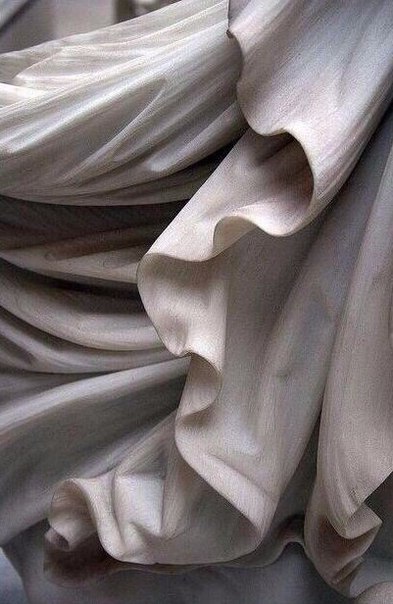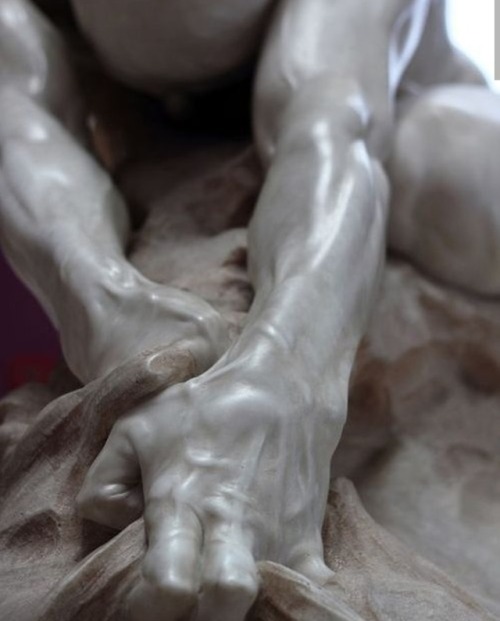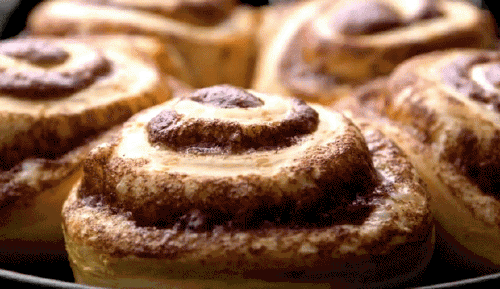Just-looking-for-some-science










More Posts from Just-looking-for-some-science and Others

Fundamentals of Applied Electromagnetics 7th Edition
Great book by Fawwaz T. Ulaby and Umberto Ravaioli
Molecule of the Day: Cinnamaldehyde


Cinnamaldehyde (C9H8O) is a yellowish, oily liquid found in the bark of cinnamon trees, and is a major component of the corresponding essential oil. It has the distinct scent of cinnamon, and is used in many foods as a flavouring agent, such as confectioneries and sweets.
Cinnamaldehyde has been shown to have antimicrobial effects, and has been used to produce antimicrobial paper in conjunction with carvacrol. It is also a fungicide, insecticide, and a repellent for many animals.
It is also a key precursor and parent compound to many aroma compounds used in perfumery, such as alpha-alkyl cinnamaldehydes (shown below), and dihydrocinnamaldehyde.

Cinnamaldehyde is biosynthesised from phenylalanine through several steps:

In the laboratory, it can also be synthesised from benzaldehyde (Day 2) and acetaldehyde (ethanal) via an acid- or base-catalysed aldol condensation reaction, which produces water as a side product:

However, it is more economically efficient to produce it via extraction from cinnamon bark, which is thus the major industrial method for cinnamaldehyde production.

Requested by anonymous
Jupiter is strange for a number of reasons. It’s the biggest planet in our Solar System, of course. It harbors perhaps the most intense radiation environments. And, according to a new study, it has a magnetic field unlike that of any other known planet.
NASA’s Juno orbiter, a basketball court-sized spacecraft, is observing the gas giant as it circles the planet at varying distances. Scientists recently mapped Jupiter’s magnetic field at four depths, and noticed a strange hemispheric dichotomy: The northern hemisphere’s magnetic field was nothing like the southern hemisphere’s.
“It’s a baffling puzzle,” the study’s first author, Harvard Ph.D student Kimberly Moore, told Gizmodo. “Why is it so complicated in the northern hemisphere but so simple in the southern hemisphere?”
Continue Reading.

Scientists have found new evidence confirming that turtles once lived without shells.
The almost-complete fossil dates back 228 million years and is bigger than a double bed.
It was discovered in the Guizhou province of south west China
Dr Nicholas Fraser, keeper of natural sciences at the National Museum of Scotland in Edinburgh, said: “It looked like a turtle but then lacked everything of the shell underneath and also the one on top.”
“It has the scaffolding in place for the shell to go on to but it doesn’t have the shell.”
Continue Reading.
What Science is Launching to Space?

The tenth SpaceX cargo resupply mission launched to the International Space Station on Feb. 18, and is carrying science ranging from protein crystal growth studies to Earth science payloads. Here’s a rundown of some of the highlights heading to the orbiting laboratory.

The CASIS PCG 5 investigation will crystallize a human monoclonal antibody, developed by Merck Research Labs, that is currently undergoing clinical trials for the treatment of immunological disease. Results from this investigation have the potential to improve the way monoclonal antibody treatments are administered on Earth.

Without proteins, the human body would be unable to repair, regulate or protect itself. Crystallizing proteins provides better views of their structure, which helps scientists to better understand how they function. Often times, proteins crystallized in microgravity are of higher quality than those crystallized on Earth. LMM Biophysics 1 explores that phenomena by examining the movement of single protein molecules in microgravity. Once scientists understand how these proteins function, they can be used to design new drugs that interact with the protein in specific ways and fight disease.

Much like LMM Biophysics 1, LMM Biophysics 3 aims to use crystallography to examine molecules that are too small to be seen under a microscope, in order to best predict what types of drugs will interact best with certain kinds of proteins. LMM Biophysics 3 will look specifically into which types of crystals thrive and benefit from growth in microgravity, where Earth’s gravity won’t interfere with their formation. Currently, the success rate is poor for crystals grown even in the best of laboratories. High quality, space-grown crystals could improve research for a wide range of diseases, as well as microgravity-related problems such as radiation damage, bone loss and muscle atrophy.


Nanobiosym Predictive Pathogen Mutation Study (Nanobiosym Genes) will analyze two strains of bacterial mutations aboard the station, providing data that may be helpful in refining models of drug resistance and support the development of better medicines to counteract the resistant strains.

During the Microgravity Expanded Stem Cells investigation, crew members will observe cell growth and morphological characteristics in microgravity and analyze gene expression profiles of cells grown on the station. This information will provide insight into how human cancers start and spread, which aids in the development of prevention and treatment plans. Results from this investigation could lead to the treatment of disease and injury in space, as well as provide a way to improve stem cell production for human therapy on Earth.

The Lightning Imaging Sensor will measure the amount, rate and energy of lightning as it strikes around the world. Understanding the processes that cause lightning and the connections between lightning and subsequent severe weather events is a key to improving weather predictions and saving life and property.

From the vantage of the station, the LIS instrument will sample lightning over a wider geographical area than any previous sensor.

Future robotic spacecraft will need advanced autopilot systems to help them safely navigate and rendezvous with other objects, as they will be operating thousands of miles from Earth.

The Raven (STP-H5 Raven) studies a real-time spacecraft navigation system that provides the eyes and intelligence to see a target and steer toward it safely. Research from Raven can be applied toward unmanned vehicles both on Earth and in space, including potential use for systems in NASA’s future human deep space exploration.

SAGE III will measure stratospheric ozone, aerosols, and other trace gases by locking onto the sun or moon and scanning a thin profile of Earth’s atmosphere.

These measurements will allow national and international leaders to make informed policy decisions regarding the protection and preservation of Earth’s ozone layer. Ozone in the atmosphere protects Earth’s inhabitants, including humans, plants and animals, from harmful radiation from the sun, which can cause long-term problems such as cataracts, cancer and reduced crop yield.

Tissue Regeneration-Bone Defect (Rodent Research-4) a U.S. National Laboratory investigation sponsored by the Center for the Advancement of Science in Space (CASIS) and the U.S. Army Medical Research and Materiel Command, studies what prevents other vertebrates such as rodents and humans from re-growing lost bone and tissue, and how microgravity conditions impact the process.

Results will provide a new understanding of the biological reasons behind a human’s inability to grow a lost limb at the wound site, and could lead to new treatment options for the more than 30% of the patient.
Make sure to follow us on Tumblr for your regular dose of space: http://nasa.tumblr.com

If you stare at one dot you’ll see that the image isn’t turning at all. Learn why illusions confuse you in our NEW VIDEO: https://youtu.be/0NPH_udOOek
[Illusion via http://bit.ly/2gvqZnb]

“So this is the composition by % of an average humans blood. Sadly there’s no such thing as an average person so this varies a lot and creates problems.”
— Biophysics professor, talking about haemodialysis biophysics,
What’s Up For September 2018?
Outstanding views Venus, Jupiter, Saturn and Mars with the naked eye!

You’ll have to look quickly after sunset to catch Venus. And through binoculars or a telescope, you’ll see Venus’s phase change dramatically during September - from nearly half phase to a larger thinner crescent!

Jupiter, Saturn and Mars continue their brilliant appearances this month. Look southwest after sunset.

Use the summer constellations help you trace the Milky Way.

Sagittarius: where stars and some brighter clumps appear as steam from the teapot.

Aquila: where the Eagle’s bright Star Altair, combined with Cygnus’s Deneb, and Lyra’s Vega mark the Summer Triangle.

Cassiopeia, the familiar “w”- shaped constellation completes the constellation trail through the Summer Milky Way. Binoculars will reveal double stars, clusters and nebulae.

Between September 12th and the 20th, watch the Moon pass from near Venus, above Jupiter, to the left of Saturn and finally above Mars!

Both Neptune and brighter Uranus can be spotted with some help from a telescope this month.

Look at about 1:00 a.m. local time or later in the southeastern sky. You can find Mercury just above Earth’s eastern horizon shortly before sunrise. Use the Moon as your guide on September 7 and 8th.

And although there are no major meteor showers in September, cometary dust appears in another late summer sight, the morning Zodiacal light. Try looking for it in the east on moonless mornings very close to sunrise. To learn more about the Zodiacal light, watch “What’s Up” from March 2018.

Watch the full What’s Up for September Video:
There are so many sights to see in the sky. To stay informed, subscribe to our What’s Up video series on Facebook.
Make sure to follow us on Tumblr for your regular dose of space: http://nasa.tumblr.com
-
 hippiebydayrickymartin liked this · 1 week ago
hippiebydayrickymartin liked this · 1 week ago -
 hazel-eyed liked this · 1 week ago
hazel-eyed liked this · 1 week ago -
 etansel liked this · 1 week ago
etansel liked this · 1 week ago -
 lambofdawn reblogged this · 1 week ago
lambofdawn reblogged this · 1 week ago -
 thesculpturefucker reblogged this · 1 week ago
thesculpturefucker reblogged this · 1 week ago -
 voraciousbookworm15 liked this · 2 weeks ago
voraciousbookworm15 liked this · 2 weeks ago -
 the-daddy-gentleman liked this · 3 weeks ago
the-daddy-gentleman liked this · 3 weeks ago -
 diandareoltre reblogged this · 3 weeks ago
diandareoltre reblogged this · 3 weeks ago -
 cherrise liked this · 1 month ago
cherrise liked this · 1 month ago -
 tackleford reblogged this · 1 month ago
tackleford reblogged this · 1 month ago -
 deadgeisha reblogged this · 1 month ago
deadgeisha reblogged this · 1 month ago -
 nagasarennayoex reblogged this · 1 month ago
nagasarennayoex reblogged this · 1 month ago -
 nagasarennayoex liked this · 1 month ago
nagasarennayoex liked this · 1 month ago -
 unvanquishablejoy reblogged this · 1 month ago
unvanquishablejoy reblogged this · 1 month ago -
 state-ofgrace liked this · 2 months ago
state-ofgrace liked this · 2 months ago -
 thorinlandscaping liked this · 2 months ago
thorinlandscaping liked this · 2 months ago -
 anxioustential reblogged this · 2 months ago
anxioustential reblogged this · 2 months ago -
 violinfantasy reblogged this · 2 months ago
violinfantasy reblogged this · 2 months ago -
 raininyourblackeyes reblogged this · 2 months ago
raininyourblackeyes reblogged this · 2 months ago -
 oxfordsonnets reblogged this · 2 months ago
oxfordsonnets reblogged this · 2 months ago -
 casuallyhobochic liked this · 2 months ago
casuallyhobochic liked this · 2 months ago -
 artesmimundo liked this · 3 months ago
artesmimundo liked this · 3 months ago -
 bumblebella liked this · 3 months ago
bumblebella liked this · 3 months ago -
 halcyon-days-no-more reblogged this · 3 months ago
halcyon-days-no-more reblogged this · 3 months ago -
 halcyon-days-no-more liked this · 3 months ago
halcyon-days-no-more liked this · 3 months ago -
 robot17 reblogged this · 3 months ago
robot17 reblogged this · 3 months ago -
 ghostrider-02 liked this · 3 months ago
ghostrider-02 liked this · 3 months ago -
 screwtornadowarningsimsouthern reblogged this · 3 months ago
screwtornadowarningsimsouthern reblogged this · 3 months ago -
 screwtornadowarningsimsouthern liked this · 3 months ago
screwtornadowarningsimsouthern liked this · 3 months ago -
 azura-fox reblogged this · 3 months ago
azura-fox reblogged this · 3 months ago -
 aliaa-j liked this · 3 months ago
aliaa-j liked this · 3 months ago -
 bruhh-hhh liked this · 3 months ago
bruhh-hhh liked this · 3 months ago -
 akitabite liked this · 3 months ago
akitabite liked this · 3 months ago -
 capricorn-season reblogged this · 3 months ago
capricorn-season reblogged this · 3 months ago -
 bitch-stopbitching liked this · 3 months ago
bitch-stopbitching liked this · 3 months ago -
 wyldeman-again reblogged this · 3 months ago
wyldeman-again reblogged this · 3 months ago -
 wyldeman-again liked this · 3 months ago
wyldeman-again liked this · 3 months ago -
 superbpuppylove reblogged this · 3 months ago
superbpuppylove reblogged this · 3 months ago -
 superbpuppylove liked this · 3 months ago
superbpuppylove liked this · 3 months ago -
 keylimespine reblogged this · 3 months ago
keylimespine reblogged this · 3 months ago -
 maurawrites reblogged this · 4 months ago
maurawrites reblogged this · 4 months ago -
 maezi-fx liked this · 4 months ago
maezi-fx liked this · 4 months ago -
 zeekwinterpaw liked this · 4 months ago
zeekwinterpaw liked this · 4 months ago -
 red-skady reblogged this · 4 months ago
red-skady reblogged this · 4 months ago -
 frogspawned liked this · 4 months ago
frogspawned liked this · 4 months ago -
 no-puede-no4444 liked this · 4 months ago
no-puede-no4444 liked this · 4 months ago -
 xx-slavi-lad-xoxo liked this · 4 months ago
xx-slavi-lad-xoxo liked this · 4 months ago -
 aceofcloverz liked this · 4 months ago
aceofcloverz liked this · 4 months ago -
 hazardousracer liked this · 5 months ago
hazardousracer liked this · 5 months ago -
 hazardousracer reblogged this · 5 months ago
hazardousracer reblogged this · 5 months ago
Some of us may not like science, but we all desperately need it
16 posts

